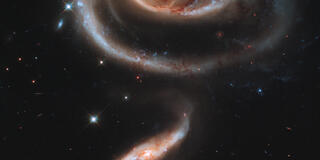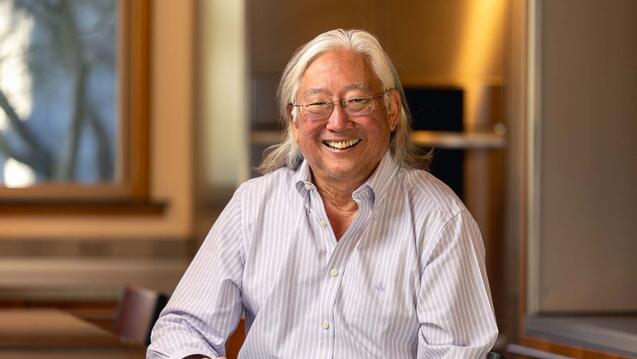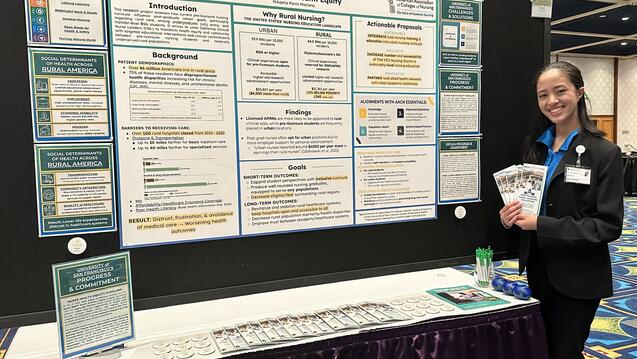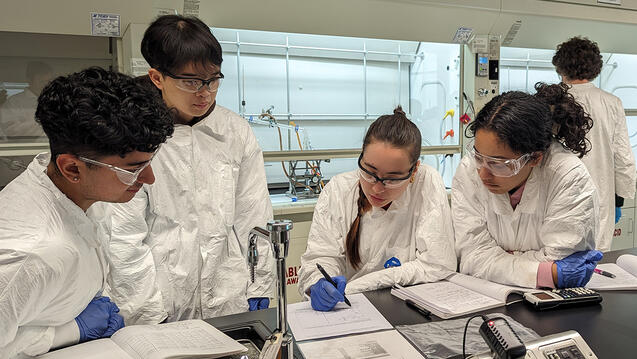Dons Gain Insider Access to Outer Space

Over the next 365 days, the Hubble Space Telescope will capture images of galaxies expressly for a University of San Francisco professor and his team of undergraduate and graduate students to analyze as they explore gravitational lenses in space.
Competition for time on the telescope is intense, with less than 18 percent of this year’s research proposals awarded time by the Space Telescope Science Institute.
“I’ve been hearing about the Hubble Space Telescope since grade school and to now be working closely with data gathered from observations from Hubble, it’s amazing,” said physics major Christopher Storfer ’20. “I knew I really liked astronomy and astrophysics before; now I’ve found something I know I really want to do. I never imagined being able to work on something like this.”
Xiaosheng Huang, USF associate professor of physics and astronomy, said observation time on Hubble was awarded to USF for research that he, Storfer, and three other students — Andrew Pilon from the physics and astronomy department, and Matthew Domingo and Varun Ravi from the computer science department — began in 2018.
Their research involved applying advanced machine-learning techniques known as deep neural networks to tens of millions of images to identify those that contain what are known in astronomy as strong gravitational lenses. These lenses, which are extremely rare, occur when two galaxies randomly align, with one in front of the other, as observed from a telescope. The gravity of the closer galaxy acts as a type of lens, bending the light emitted from the farther galaxy to create distinctive images that can be captured by a telescope.
Starting Oct. 1, 2019, Hubble will produce an entirely new set of images for the USF team to run machine learning techniques on to identify the lenses.
Studying Dark Matter — and Dark Energy
Why study such phenomena? As Huang explains it, gravitational lensing is the only direct way of probing dark matter. That’s because it’s not the stars in a galaxy but both stars and dark matter that act as a lens. In fact, dark matter typically is far more massive in a galaxy than so-called luminous matter such as stars, and plays the dominant role in lensing.
Dig even deeper and gravitational lenses are a probe for another mystery of the universe — dark energy.
“Dark energy alters how the universe evolves,” Huang said. “Galaxies involved in a gravitational lensing system are typically very far away, and because it takes billions of years in time for light to reach you, by looking at these galaxies, we’re looking at the past. By carefully modeling how the lensing happens, we can see how dark energy is causing the universe to change.”
Machine Learning Aids Research
Of 30 million images captured, 1,000 might be of gravitational lenses. That’s where the idea of applying machine learning comes in — in this case using image recognition via neural networks, a set of algorithms recognize patterns.
Huang, whose previous research has focused on supernova and gravitational lenses, first began working on identifying gravitational lenses as part of a large-scale optical imaging survey he was working on while he was on sabbatical at the Lawrence Berkeley National Laboratory. He recruited two USF physics students and the three of them set about learning about neural networks and then applying them to the vast set of images. At that point, Huang said, few groups worldwide were applying those algorithms to real gravitational lens data; instead they were working off simulated data.
By the end of the summer 2018, Huang’s small team had promising results — the algorithms were working well — and also an understanding that it was a much larger project. Last fall, Huang added two USF computer science students, an undergraduate and a graduate student, to join the team. The five of them continued working their way through the images, updating their code, and confirming that the algorithms were indeed correctly identifying gravitational lenses. Given the results, Huang decided to apply for observing time on Hubble to capture more images of gravitational lenses — but he knew it was a very competitive process.
Huang and his team learned in June that they had been awarded the observing time along with associated research grant funding. Of the 181 accepted proposals, Huang’s is the only one led by a liberal arts institution.


